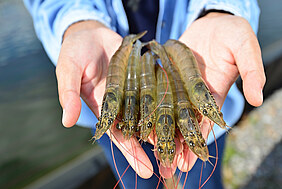Sustainable innovations are driving the development of the aquaculture industry and especially that of aquatic feed formulation. The 30-year-old trend to reduce fishmeal (FM) inclusion in formulas has led manufacturers to find new alternatives to marine raw materials. Co-products resulting from seafood and food processing are valuable sources of raw materials as long as freshness and supply chain consistency are guaranteed. Tuna, tilapia, squid, shrimp, whitefish as well as chicken bases are among the most common sources. If the meal process is today dominating the valorization of such seafood co-products, the hydrolysis process can be considered a better alternative to generate new functionalities to finished products i.e. functional hydrolysates, like higher palatability, digestibility and bioactivities.
Marine hydrolysates for shrimp | Functional ingredients | Palatability enhancer | Article

